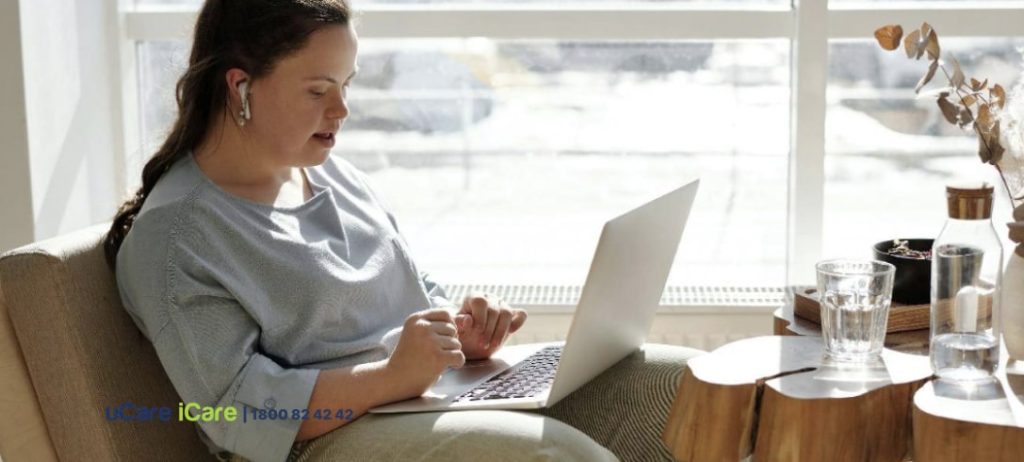Home modifications are essential for individuals with disabilities, ensuring that their living environments are both safe and accessible. With funding from the National Disability Insurance Scheme (NDIS), many people can make crucial changes to their homes, enhancing independence and quality of life. In this article, we explore how home modifications for disability support work, the types of modifications available, and how NDIS funding can assist in covering the costs.
Need NDIS personal care? Click now
Understanding Home Modifications for Disability Support
Home modifications are changes made to improve accessibility for individuals with physical, sensory, or cognitive impairments. These alterations can range from small adjustments, such as installing grab rails, to major renovations, like bathroom refurbishments or adding wheelchair ramps. The goal is to create an environment that supports independence, safety, and ease of movement.
For those living with disabilities, daily tasks can become challenging without a properly adapted home. Home modifications can significantly reduce these challenges, allowing individuals to maintain a higher level of independence and rely less on caregivers for daily activities.
Why Home Modifications are Crucial for People with Disabilities
For individuals with disabilities, their home should be a place where they feel safe and independent. Without appropriate modifications, even routine activities can become difficult or dangerous. Here are a few reasons why these modifications are so essential:
1. Increased Safety and Accessibility
Home modifications, such as installing ramps or non-slip flooring, help to prevent accidents, especially for individuals with mobility impairments. Accessible bathrooms and kitchens allow people to move around their home with ease and comfort.
2. Greater Independence
Modifications like widening doorways or installing grab rails empower people with disabilities to carry out everyday tasks independently, without requiring assistance for basic needs such as using the bathroom or preparing meals.
3. Improved Comfort and Quality of Life
Living in a home designed around one’s unique needs ensures a higher quality of life. Instead of navigating obstacles, individuals can focus on enjoying their space and feeling at home.
4. Reduced Strain on Caregivers
By improving the functionality and safety of a home, caregivers are less likely to face physical strain, and the person receiving care can maintain more control over their daily activities.
Types of Home Modifications for Disability Support
Home modifications can be minor or major, depending on the needs of the individual. Let’s explore some of the most common modifications for disability support:
1. Minor Modifications
These are small, low-cost changes that can make a significant difference:
– Grab rails: Installed in bathrooms or near stairs for added safety.
– Widening doorways: To accommodate wheelchair access.
– Non-slip flooring: Helps prevent falls, particularly in bathrooms or kitchens.
– Lever taps: Easier to operate for individuals with limited hand mobility.
2. Major Modifications
These involve more substantial structural changes:
– Ramps: Essential for wheelchair users to access the home.
– Bathroom refurbishments: Installing walk-in showers, height-adjustable sinks, or shower seats for easy accessibility.
– Kitchen modifications: Lowering countertops and cupboards, making appliances more accessible.
– Lifts or stairlifts: Installed to help individuals navigate multiple levels of a home.
3. Assistive Technology
Incorporating smart technology can also enhance accessibility:
– Automated lighting and appliances: Allow individuals to control their home environment with ease.
– Voice-activated systems: Useful for individuals with limited mobility or dexterity.
– Motion sensor lighting: Ensures rooms are illuminated without the need for switches.
How the NDIS Supports Home Modifications
The National Disability Insurance Scheme (NDIS) offers funding for home modifications deemed “reasonable and necessary” for participants. The modifications must directly relate to the participant’s disability, and an occupational therapist’s assessment is often required to confirm what changes are necessary.
1. Eligibility for NDIS Funding
To receive funding for home modifications, NDIS participants must demonstrate that their disability impacts their ability to live safely and independently. The NDIS will fund modifications that are necessary to improve the participant’s quality of life.
2. NDIS Coverage for Modifications
The NDIS covers a variety of modifications, from minor adjustments to large-scale renovations. However, the modifications must be approved as necessary under the participant’s NDIS plan, following an assessment by a qualified professional, usually an occupational therapist.
3. Assessment and Approval Process
An occupational therapist will assess the participant’s home and recommend the necessary modifications. The NDIS will then review these recommendations and approve funding for the modifications if they meet the criteria of being “reasonable and necessary.”
4. Working with NDIS-Registered Providers
It is crucial to work with NDIS-registered builders and contractors who specialise in disability modifications. These professionals ensure that modifications are completed to a high standard and meet safety requirements.
Step-by-Step Process for Accessing NDIS Home Modifications
Here’s a step-by-step guide to accessing NDIS funding for home modifications:
1. Assessment by an Occupational Therapist
An occupational therapist will assess your home to identify the necessary modifications based on your specific needs.
2. Recommendation Submission to NDIS
The therapist will submit their recommendations to the NDIS as part of your overall NDIS plan.
3. Approval and Funding
If the modifications are approved, the NDIS will allocate funding for the changes in your plan. This funding is usually provided under the Capital Support budget.
4. Hiring a Registered Provider
You’ll work with an NDIS-registered provider who specialises in home modifications to carry out the necessary work.
5. Completion of Modifications
Once completed, you’ll have an adapted home environment that meets your accessibility and safety needs, enhancing your quality of life.
Conclusion
Home modifications are an essential part of disability support, providing people with the independence, safety, and comfort they need to live fulfilling lives. Through the NDIS, individuals with disabilities can access the funding necessary to make these modifications, allowing them to thrive in a home tailored to their unique needs.



